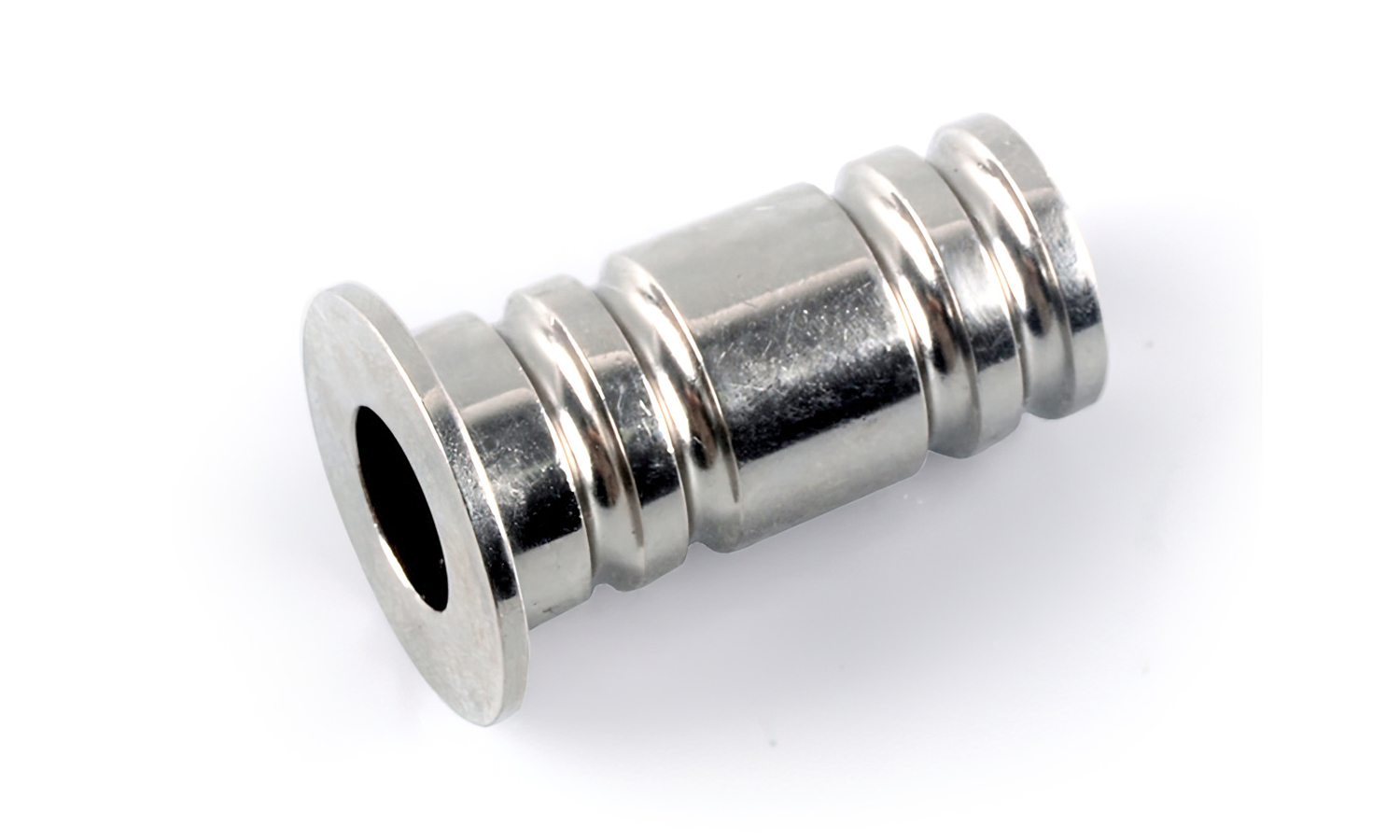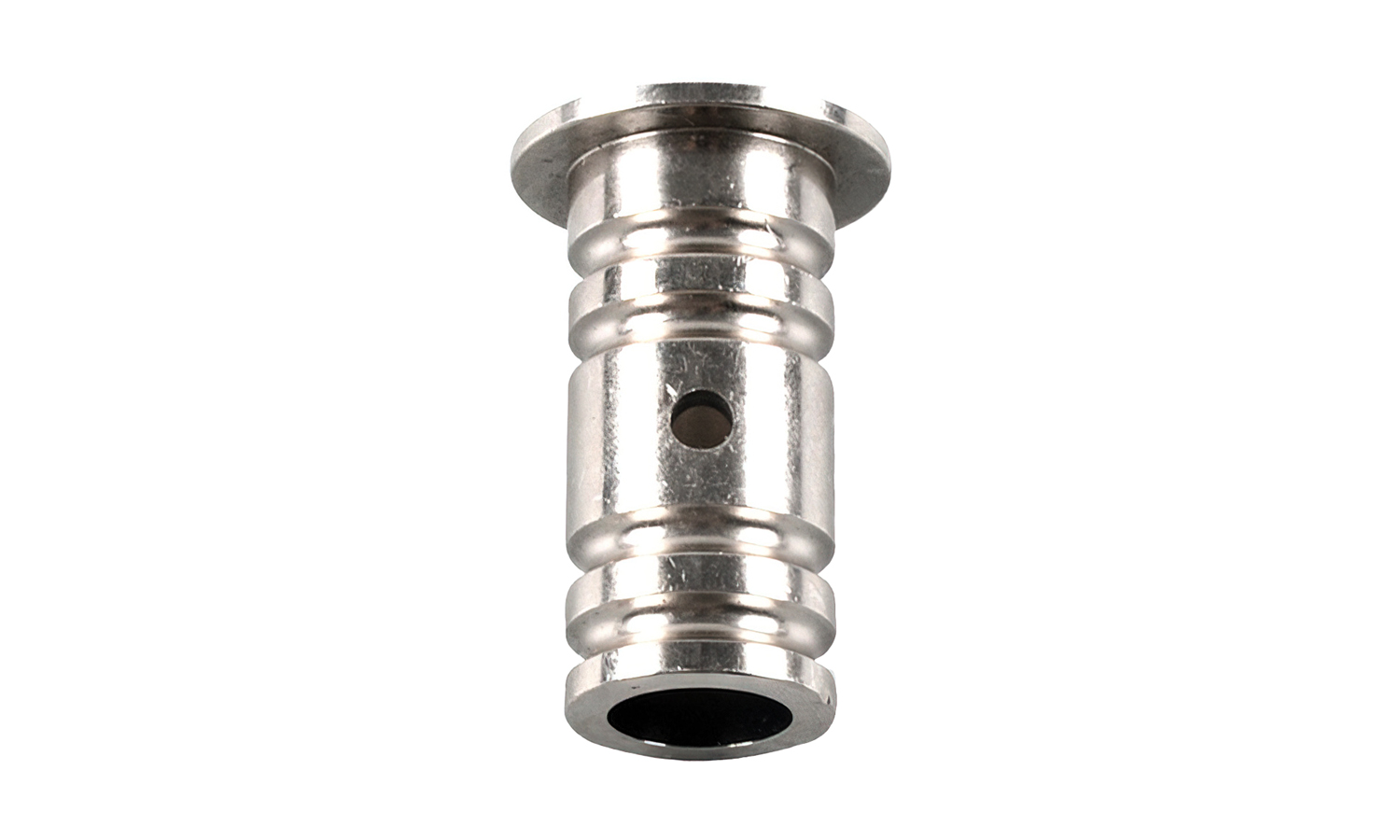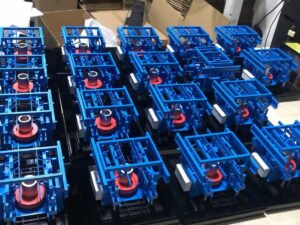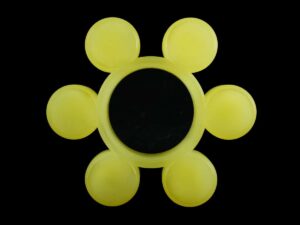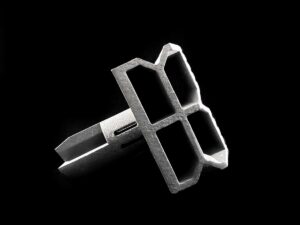Gallery
About Project
When it comes to plumbing and fluid transfer systems, reliability and longevity are paramount. That’s why high-quality components, like this meticulously CNC milled SS304 fitting, are essential for ensuring leak-proof and durable connections.
Look closely at this fitting. The cylindrical body with its precise ridges speaks to the accuracy achieved through CNC machining. These ridges likely play a crucial role in providing a secure grip for hoses or other connecting elements, ensuring a tight seal under pressure.
The prominently featured flared end with a central opening is clearly designed for connection. This specific geometry suggests it could be used with various types of hoses or pipes, creating a robust and dependable joint. The use of SS304 (304 Stainless Steel) as the material further emphasizes the focus on durability and resistance to corrosion. This grade of stainless steel is well-known for its excellent properties in demanding environments, making it ideal for applications involving water, chemicals, or varying temperatures.
Where would you typically find a fitting like this? The applications are vast and varied, including:
- Industrial Plumbing: Connecting pipes and hoses in manufacturing plants, chemical processing facilities, and other industrial settings.
- Fluid Transport Systems: Ensuring secure connections in systems transporting liquids or gases.
- Automotive Applications: Used in fuel lines, coolant systems, and other critical fluid pathways.
- Hydraulic and Pneumatic Systems: Connecting hoses and components in systems relying on fluid power.
The precision offered by CNC milling ensures that these fittings meet tight tolerances, guaranteeing a perfect fit and minimizing the risk of leaks or failures. The choice of SS304 ensures the fitting can withstand harsh conditions and provide years of reliable service.
Need custom metal parts like this SS304 fitting for your plumbing system or other applications? Look no further than FacFox’s professional CNC machining services. FacFox offers a wide range of materials, including stainless steel, and boasts advanced CNC equipment to bring your designs to life with exceptional accuracy and speed. Whether you need prototypes or production quantities, FacFox can deliver high-quality CNC milled parts tailored to your exact specifications. Visit facfox.com today to learn more and get a quote for your next project!
Solution
- Step 1: Raw material was selected. A suitable grade of metal, likely stainless steel given the appearance and potential application, was chosen for its material properties.
- Step 2: Stock was prepared. The selected raw material was cut to the appropriate length and potentially faced to ensure accurate dimensions for machining.
- Step 3: Initial turning operations were performed. Using a CNC lathe, the basic cylindrical shape and outer diameters were machined. This would have involved roughing cuts to remove bulk material and finishing cuts for precise dimensions.
- Step 4: The flared end was formed. The flared shape at one end was created, likely through further turning operations on the lathe, carefully shaping the metal to the desired profile.
- Step 5: The ridges were machined. The multiple ridges along the length of the part were cut using precise tooling on the lathe. This step required careful programming to achieve the correct spacing and depth of the grooves.
- Step 6: The central opening was drilled. The central hole in the flared end was created using a drilling operation, ensuring it was centered and to the specified diameter.
- Step 7: The side hole was drilled. The small hole visible on the side of the cylindrical section was drilled, likely using a drill press or a CNC machining center, at the specified location and diameter.
- Step 8: Deburring was performed. Sharp edges and burrs created during the machining processes were removed to ensure smooth handling and proper function of the part. This could have been done manually or using automated deburring equipment.
- Step 9: Surface finishing was applied (optional). Depending on the requirements, a surface finish, such as polishing or passivation for stainless steel, might have been applied to improve corrosion resistance or aesthetics.
- Step 10: The part was inspected. The finished part was carefully inspected to ensure it met all dimensional and quality specifications. This would have involved using measuring tools like calipers, micrometers, and potentially coordinate measuring machines (CMMs).
- Step 11: The part was cleaned. Any remaining machining fluids or contaminants were cleaned from the part.
- Step 12: The part was packaged. Finally, the manufactured part was packaged for shipment or further assembly.
